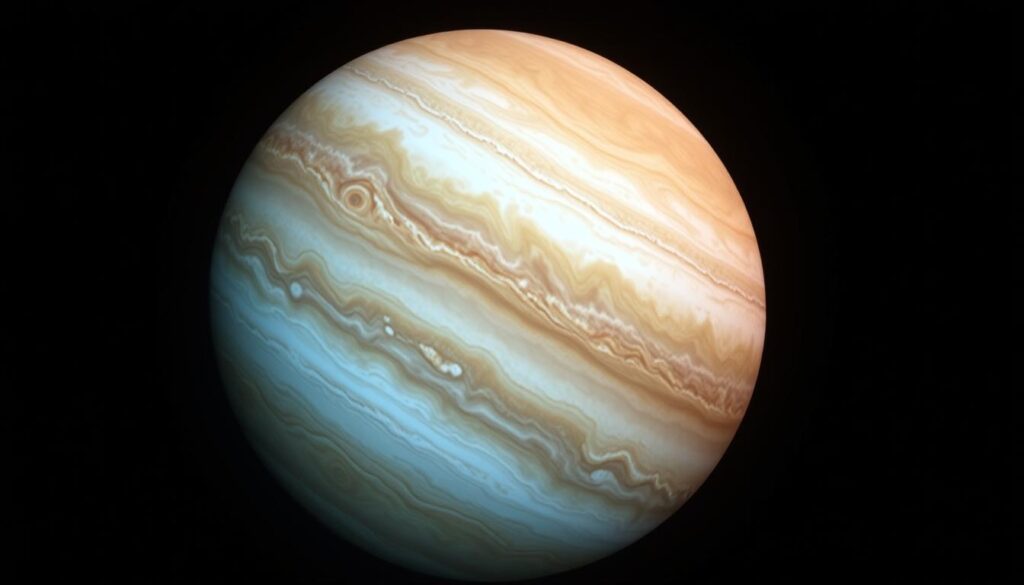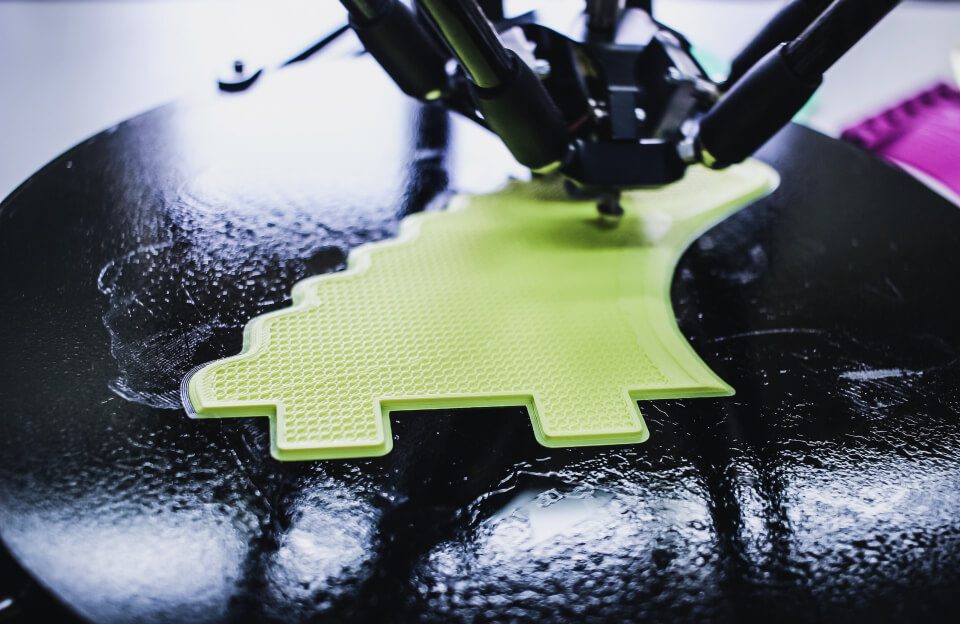Jupiter, the largest planet in our solar system, has always fascinated astronomers and space enthusiasts alike. With a diameter of approximately 89,000 miles, it’s a gas giant that continues to captivate us with its stunning atmosphere and intricate details.
NASA’s spacecraft have been at the forefront of exploring Jupiter, capturing breathtaking Jupiter images that reveal the planet’s majestic beauty. From the vibrant cloud bands to the massive storms like the Great Red Spot, these NASA Jupiter photos offer a glimpse into the planet’s complex and dynamic atmosphere.
Key Takeaways
- NASA’s spacecraft have captured stunning images of Jupiter.
- The planet’s atmosphere is complex and dynamic.
- Jupiter’s size and scale are awe-inspiring.
- NASA continues to explore Jupiter with advanced spacecraft.
- The images reveal intricate details about Jupiter’s composition.
NASA’s Historic Journey to Jupiter: Missions That Captured the Gas Giant
NASA’s odyssey to Jupiter has encompassed a range of spacecraft that have significantly advanced our understanding of the gas giant. This journey has been marked by several historic missions that have not only captured stunning images but have also greatly expanded our knowledge of Jupiter.
Pioneer and Voyager: The First Glimpses
The early 1970s saw NASA’s Pioneer 10 and 11 spacecraft fly by Jupiter, providing the first close-up images of the planet. These missions were followed by Voyager 1 and 2, which further detailed Jupiter’s atmosphere and moons. The Pioneer and Voyager missions laid the groundwork for future explorations.
The Voyager spacecraft, in particular, sent back breathtaking images, revealing the complexity and beauty of Jupiter’s atmosphere. The data collected by these missions helped scientists understand Jupiter’s magnetic field, its intense radiation belts, and the composition of its atmosphere.
Galileo and Cassini: Dedicated Explorers
Later, the Galileo spacecraft orbited Jupiter from 1995 to 2003, offering unprecedented insights into the planet’s atmosphere, magnetic field, and moons. Although primarily designed to explore Saturn, the Cassini spacecraft also flew by Jupiter en route, capturing valuable data and images.
The Galileo mission was particularly significant as it provided detailed observations of Jupiter’s moons, including the discovery of volcanic activity on Io and the presence of a subsurface ocean on Europa. These findings have had profound implications for the search for life beyond Earth.
The Technology Behind Jupiter Photography
Capturing high-quality images of Jupiter from space requires sophisticated technology. NASA’s spacecraft are equipped with advanced cameras and sensors that can withstand the harsh conditions of space, including extreme temperatures and radiation.
The technology behind these cameras involves highly sensitive detectors that can capture images in low light conditions, as well as sophisticated data compression algorithms to transmit the images back to Earth. The imaging process is complex, involving the coordination of spacecraft orientation, camera settings, and data transmission protocols.
| Mission | Primary Objective | Key Discoveries |
|---|---|---|
| Pioneer 10 & 11 | First close-up images of Jupiter | Jupiter’s magnetic field, radiation belts |
| Voyager 1 & 2 | Detailed exploration of Jupiter’s atmosphere and moons | Complex atmospheric phenomena, Jupiter’s moons |
| Galileo | Orbital exploration of Jupiter and its moons | Volcanic activity on Io, subsurface ocean on Europa |
Photos of Jupiter From NASA Spacecraft, Both Near and Far
From the vast distance of flybys to the intimate proximity of orbiters, NASA’s spacecraft have provided a diverse portfolio of Jupiter images. These photographs not only showcase the planet’s majestic appearance but also offer valuable insights into its atmospheric phenomena and moons.
Juno’s Breathtaking Close-ups of Jupiter’s Clouds
NASA’s Juno spacecraft, orbiting Jupiter since 2016, has captured high-quality Jupiter photos that reveal the intricate details of its cloud layers. Juno’s instruments have allowed scientists to study the planet’s atmosphere in unprecedented detail, including the turbulent clouds and the Great Red Spot.
The JunoCam instrument on board has taken stunning images of Jupiter’s clouds, showcasing their vibrant colors and complex structures. These Jupiter close-up images have provided scientists with a better understanding of Jupiter’s atmospheric dynamics.
New Horizons’ Unique Perspective
During its flyby in 2007, New Horizons captured unique images of Jupiter, offering a different perspective on the planet. These photos were taken from a significant distance, providing a broader view of Jupiter’s atmosphere and its interaction with the surrounding space.
Jupiter and Its Moons: Family Portraits
NASA’s spacecraft have also captured images that include Jupiter and its moons, creating ‘family portraits’ that highlight the planet’s relationship with its satellites. These images are crucial for understanding the Jupiter system’s dynamics and the characteristics of its moons.
| Spacecraft | Year | Notable Features Captured |
|---|---|---|
| Juno | 2016-ongoing | Detailed cloud structures, Great Red Spot |
| New Horizons | 2007 | Jupiter’s atmosphere, distant perspective |
| Galileo | 1995-2003 | Jupiter’s moons, magnetic field interactions |
The diverse range of images captured by NASA’s spacecraft has significantly enhanced our understanding of Jupiter. From the close-up views of its clouds to the broader perspectives that include its moons, these photographs continue to inspire scientists and the public alike.
Jupiter’s Atmospheric Wonders Revealed Through NASA Imaging
The atmospheric wonders of Jupiter have been captured in stunning detail by NASA’s imaging capabilities. Jupiter’s atmosphere is a complex and dynamic system, with swirling storm systems, vibrant cloud bands, and mysterious polar phenomena.
The Great Red Spot: A Storm for the Ages
One of the most iconic features of Jupiter’s atmosphere is the Great Red Spot, a gigantic anticyclonic storm that has been raging for centuries. NASA’s Juno mission has provided unprecedented close-up views of this phenomenon, revealing intricate details about its structure and dynamics. The Great Red Spot is so large that it could swallow several Earths whole, making it a truly awe-inspiring sight.
The storm’s reddish hue is still not fully understood, with theories suggesting it could be due to the presence of complex organic molecules or sulfur and phosphorus compounds. Ongoing research and observations continue to shed light on this enduring mystery.
Jupiter’s Dynamic Cloud Bands and Polar Regions
Jupiter’s atmosphere is characterized by vibrant cloud bands, created by strong winds that can reach speeds of up to 400 miles per hour. These bands are not static; they change over time, with new storms and vortices emerging. NASA’s imaging has captured the intricate patterns and colors of these cloud bands, providing valuable insights into Jupiter’s atmospheric circulation.
The polar regions of Jupiter are equally fascinating, with cyclonic storms clustered around the poles in a pattern that is unlike anything seen on Earth. NASA’s Juno mission has revealed these polar cyclones in stunning detail, offering scientists a chance to study these unique weather patterns.
Scientific Discoveries Through Jupiter Photography
The high-resolution images captured by NASA’s spacecraft have significantly advanced our understanding of Jupiter’s atmosphere. By analyzing these images, scientists can study the planet’s atmospheric dynamics, including wind patterns, storm development, and cloud composition.
- Detailed observations of Jupiter’s cloud layers and their properties.
- Insights into the planet’s atmospheric circulation patterns and their impact on the global climate.
- Studies on the Great Red Spot’s structure and its long-term changes.
These scientific discoveries not only deepen our knowledge of Jupiter but also contribute to our understanding of atmospheric processes in our solar system.
Conclusion: Jupiter’s Enduring Allure in Spacecraft Photography
NASA’s spacecraft have captured Jupiter’s majesty in unprecedented detail, revealing the gas giant’s stunning beauty and complex atmosphere. From the swirling clouds of the Great Red Spot to the icy surface of Europa, Jupiter’s family of moons and its own turbulent weather patterns have been showcased in breathtaking images.
Through the lens of NASA’s spacecraft, we have witnessed Jupiter’s grandeur, from the vibrant cloud bands to the aurora-lit polar regions. The stunning photographs taken by Juno, New Horizons, and other spacecraft have not only expanded our understanding of Jupiter but have also inspired a new generation of astronomers and space enthusiasts.
As we continue to explore the Jupiter system, NASA’s ongoing and future missions will undoubtedly uncover more secrets about this captivating planet. For now, we can marvel at the majesty of Jupiter, a true wonder of our solar system.



